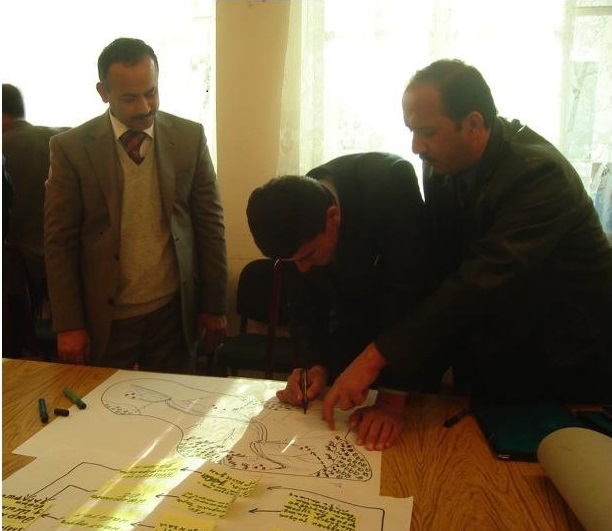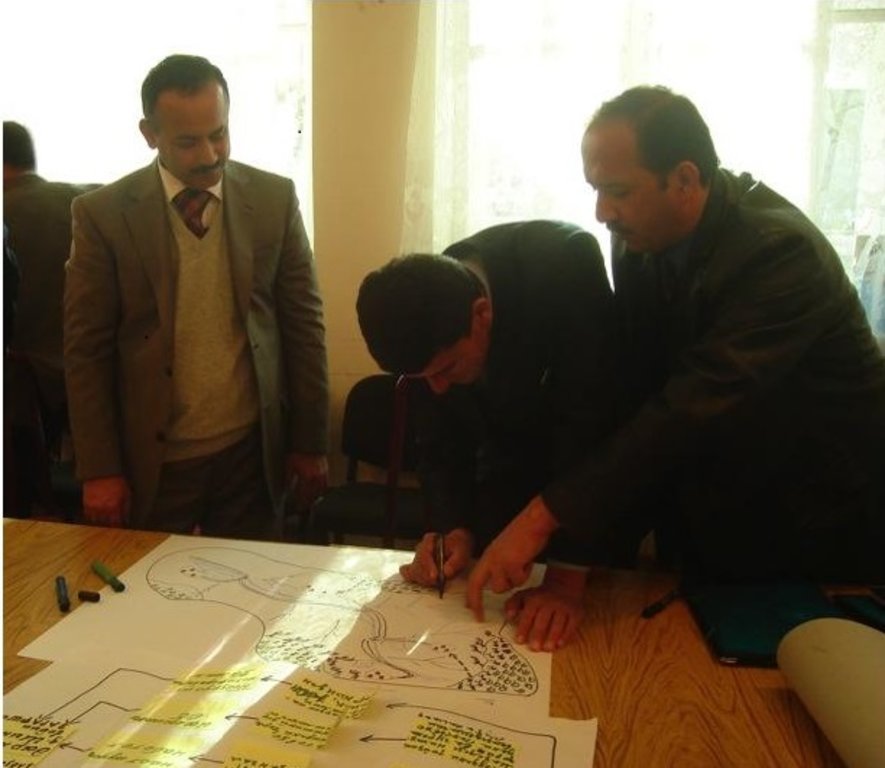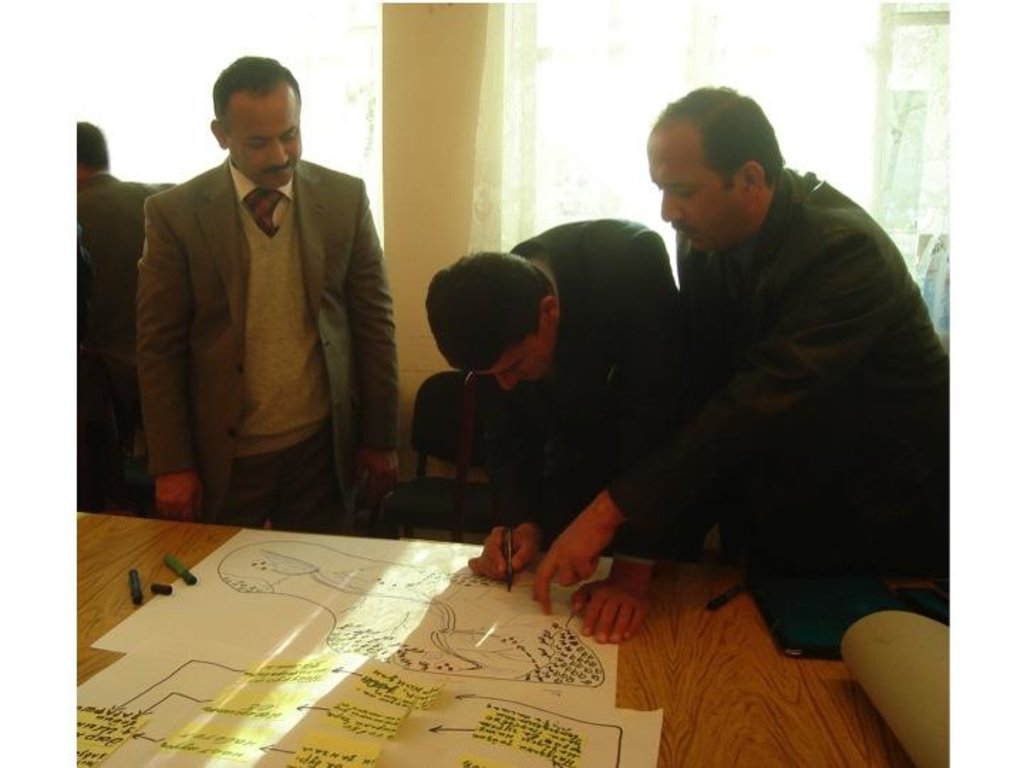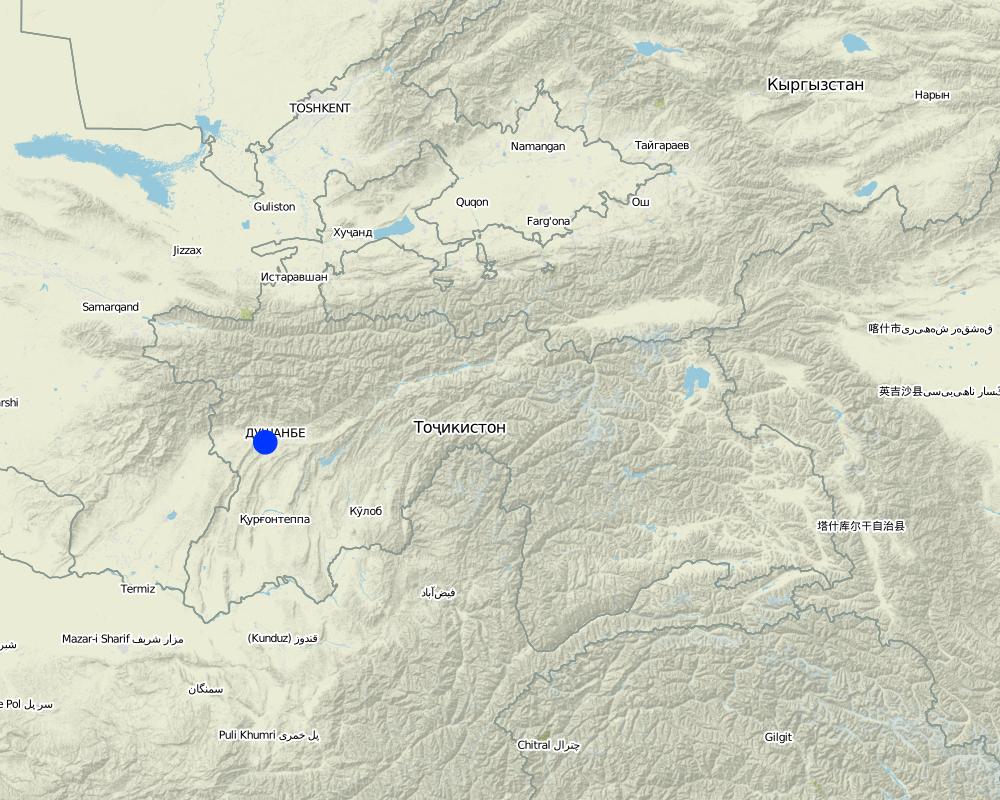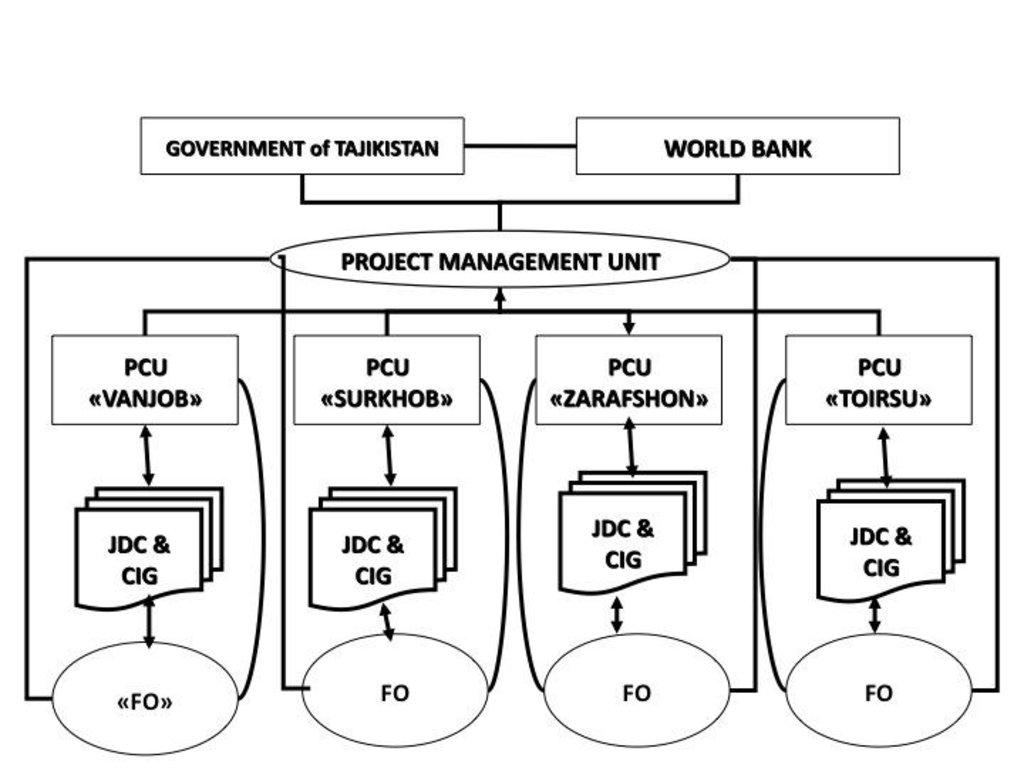Eligibility Criteria and Environmental Planning Tools for SLM [ប្រទេសតាហ្ស៊ីគីស្ថាន]
- ការបង្កើត៖
- បច្ចុប្បន្នភាព
- អ្នកចងក្រង៖ Nandita Jain
- អ្នកកែសម្រួល៖ –
- អ្នកត្រួតពិនិត្យច្រើនទៀត៖ David Streiff, Alexandra Gavilano
approaches_2578 - ប្រទេសតាហ្ស៊ីគីស្ថាន
- សង្ខេបជា PDF
- សេចក្តីសង្ខេបពេញលេញជាទម្រង់ PDF សម្រាប់បោះពុម្ព
- សេចក្តីសង្ខេបពេញលេញទម្រង់អ៊ីនធឺនេត
- សេចក្តីសង្ខេបពេញលេញ (មិនមានទម្រង់ជាក់លាក់)
- Eligibility Criteria and Environmental Planning Tools for SLM: 7 ខែ កក្កដា ឆ្នាំ 2017 (inactive)
- Eligibility Criteria and Environmental Planning Tools for SLM: 7 ខែ កក្កដា ឆ្នាំ 2017 (inactive)
- Eligibility Criteria and Environmental Planning Tools for SLM: 10 ខែ សីហា ឆ្នាំ 2017 (inactive)
- Eligibility Criteria and Environmental Planning Tools for SLM: 2 ខែ វិច្ឆិកា ឆ្នាំ 2021 (public)
ពិនិត្យមើលគ្រប់ផ្នែក
ពង្រីកមើលទាំងអស់ បង្រួមទាំងអស់1. ព័ត៌មានទូទៅ
1.2 ព័ត៌មានលម្អិតពីបុគ្គលសំខាន់ៗ និងស្ថាប័នដែលចូលរួមក្នុងការវាយតម្លៃ និងចងក្រងឯកសារនៃវិធីសាស្ត្រផ្សព្វផ្សាយ
អ្នកជំនាញឯកទេស SLM:
Mott Jessica
World Bank
សហរដ្ឋអាមេរិក
ឈ្មោះអង្គភាពមួយ (ច្រើន) ដែលបានចងក្រងឯកសារ/ វាយតម្លៃលើវិធីសាស្ត្រផ្សព្វផ្សាយ (បើទាក់ទង)
World Bank (World Bank) - សហរដ្ឋអាមេរិក1.3 លក្ខខណ្ឌទាក់ទងទៅនឹងការប្រើប្រាស់ទិន្នន័យដែលបានចងក្រងតាមរយៈវ៉ូខេត
តើពេលណាដែលទិន្នន័យបានចងក្រង (នៅទីវាល)?
19/11/2007
អ្នកចងក្រង និង(បុគ្គលសំខាន់ៗ)យល់ព្រមទទួលយកនូវលក្ខខណ្ឌនានាទាក់ទងទៅនឹងការប្រើប្រាស់ទិន្នន័យដែលបានចងក្រងតាមរយៈ វ៉ូខេត:
បាទ/ចា៎
1.4 ការយោងមួយ (ច្រើន) ទៅលើ (កម្រង) បញ្ជីសំណួរនៃបច្ចេកទេស SLM
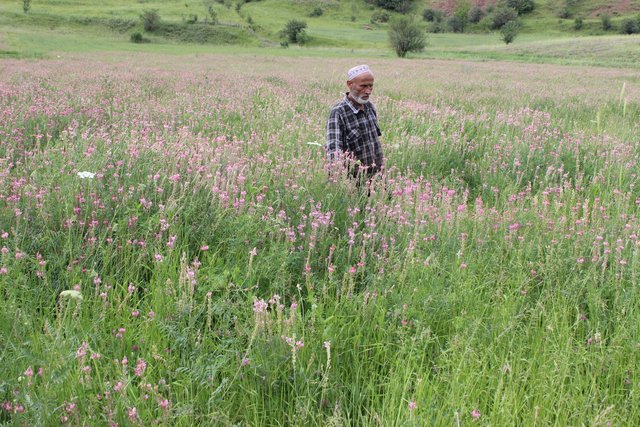
[ប្រទេសតាហ្ស៊ីគីស្ថាន]
None
- អ្នកចងក្រង៖ MIZROBSHO AMIRBEKOV
2. ការពណ៌នាអំពីវិធីសាស្ត្រផ្សព្វផ្សាយ SLM
2.1 ពណ៌នាសង្ខេបខ្លីពីវិធីសាស្ត្រផ្សព្វផ្សាយ
Using eligibility criteria and participatory environmental analyses for selecting and assessing SLM investments.
2.2 ពណ៌នាលម្អិតពិវិធីសាស្ត្រផ្សព្វផ្សាយ
ពណ៌នាលម្អិតពិវិធីសាស្ត្រផ្សព្វផ្សាយ:
Aims / objectives: As part of the Community Agriculture and Watershed Management Project (CAWMP), tools were developed to ensure farmers chose appropriate SLM technologies while preparing Community Action Plans (CAPs) and to improve environmental assessments during CAP preparation and in rural investment activities.
Methods: Eligibility Criteria: CAWMP financed small grants for three types of rural production investments: farm productivity, rural infrastructure, and land resource management (the largest type). The eligibility criteria for these grants included meeting at least one of the following impacts on fragile lands: • Prevent/reduce soil erosion • Increase vegetative cover through perennial crops and pasture • Provide soil and moisture conservation • Improve soil quality • Improve water use efficiency • Increase sustainable fodder/wood supply • Increase sustainable renewable energy supply • Increase integrated pest management These criteria ensured an environmental focus, and kept the grant proposals consistent with a list of eligible activities which is critical for a large-scale, community-driven project such as CAWMP. The criteria helped avoid diversion of grant funds to investments not directly related to land sustainability. Combining income-generating investments with environmental criteria encouraged sustainable land use by addressing vital interests of local people. The criteria were used to monitor local environmental impacts. Project arrangements provided for land use right certificates to beneficiaries with Project-financed investments on sloping lands, giving them a stake in the sustained productivity of their land. Traditionally such land use right certificates were issued only for irrigated and other valley areas. The Project financed a total of almost US$ 5.3 million in grants for land resource management, through almost 2,300 subprojects, benefitting over 43,000 households.
Stages of implementation: Participatory environmental analyses. A review of investment proposals and field activities in 2007 revealed that farmers were not capable of properly assessing their local land management problems, identifying the most environmentally appropriate investments or actions, nor monitoring their effectiveness. Tools were developed for project partners and officials to address these concerns including: 1) Developing Conceptual Models of Local Environments/Watersheds; 2) Mapping Local Environments/Watersheds and Associated Threats; 3) Identifying and Ranking Environmental Threats; and 4) Community Environmental Assessment. More than 50 persons attended the two-day interactive training course on the use of the tools. Detailed guidelines for facilitators and trainers to use the tools were prepared in Tajik and Russian. While the training could not influence many of the SLM-related investments already submitted for funding, participants urged that similar training be conducted at the inception of SLM-related projects and that the tools be requirements of SLM planning.
2.3 រូបភាពនៃវិធីសាស្ត្រផ្សព្វផ្សាយ
2.5 ប្រទេស/តំបន់/ទីតាំងកន្លែង ដែលវិធីសាស្ត្រផ្សព្វផ្សាយត្រូវបានអនុវត្តន៍
ប្រទេស:
ប្រទេសតាហ្ស៊ីគីស្ថាន
តំបន់/រដ្ឋ/ខេត្ត:
Sughd, RRS, Khatlon, GBAO
បញ្ជាក់បន្ថែមពីលក្ខណៈនៃទីតាំង:
Jirgital, Tajikibad, Vanj, Aini, Matcha, Penjikent, Danghara
មតិយោបល់:
The Community Agriculture and Watershed Management Project was implemented in four project sites/watersheds - Surkhob, Toirsu, Vanjob and Zarafshan - and included 7 districts/raions and 39 sub-districts/jamoats. The total catchment area was 35,000km2. Total arable, farm and pasture land was approximately 319,500ha
Map
×2.6 កាលបរិច្ឆេទនៃការចាប់ផ្តើម និងបញ្ចប់នៃវិធីសាស្រ្តផ្សព្វផ្សាយនេះ
សូមបញ្ជាក់ឆ្នាំដែលបានបង្កើតឡើង:
2005
ឆ្នាំបញ្ចប់ (ប្រសិនបើវិធីសាស្ត្រផ្សព្វផ្សាយត្រូវបានឈប់ប្រើប្រាស់):
2012
2.7 ប្រភេទនៃវិធីសាស្ត្រផ្សព្វផ្សាយ
- ផ្អែកលើគម្រោង/កម្មវិធី
2.8 គោលបំណង/ទិសដៅសំខាន់នៃវិធីសាស្ត្រផ្សព្វផ្សាយ
The Approach focused mainly on other activities than SLM (participatory environmental analyses, eligibility criteria, monitoring, assessment, training, guidelines, )
Application of the criteria and tools to help ensure that proposed rural investments in Community Action Plans kept their environmental management focus.
The SLM Approach addressed the following problems: Inappropriate investments with questionable SLM benefits proposed in CAPs. Uneven, sometimes, missing focus on environmental risks and benefits in small grant proposals for rural production investments. Lack of skills in and knowledge of participatory environmental appraisals.
2.9 លក្ខខណ្ឌអនុញ្ញាត ឬរារាំងការអនុវត្តន៍បច្ចេកទេសដែលស្ថិតនៅក្រោមវិធីសាស្រ្តផ្សព្វផ្សាយ
បរិបទនៃស្ថាប័ន
- រារាំង
Legacy of command-economy focus on infrastructure investments for improving land management and agriculture
Treatment through the SLM Approach: Tools to analyse a range of environmental aspects of land management and propose alternative technologies and approaches, training for project implementers and stakeholders.
ចំណេះដឹងស្តីពី SLM និងការទទួលបានការគាំទ្រផ្នែកបច្ចេកទេស
- រារាំង
Lack of appropriate analyses of environmental relationships, threats, risks and impacts in choice and design of investment proposals at the village level
Treatment through the SLM Approach: Establishing eligibility criteria, development of participatory learning tools on environmental issues, training for project partners and stakeholders.
3. ការចូលរួម និងតួនាទីរបស់ភាគីពាក់ព័ន្ធ
3.1 អ្នកពាក់ព័ន្ធដែលបានចូលរួមក្នុងវិធីសាស្ត្រផ្សព្វផ្សាយ និងតួនាទីរបស់ពួកគេ
- អ្នកប្រើប្រាស់ដីក្នុងតំបន់/សហគមន៍
Jamoat (Sub-district) Development Committees
- អ្នកឯកទេសគ្រប់គ្រងដីប្រកបដោយចីរភាព/ទីប្រឹក្សាបច្ចេកទេសកសិកម្ម
Facilitating organization staff, local government specialists, project field staff
- រដ្ឋាភិបាលថ្នាក់ជាតិ (អ្នករៀបចំផែនការ អ្នកសម្រេចចិត្ត)
Project Management Unit (PMU), Project Coordination Units (PCUs)
ប្រសិនមានភាគីពាក់ព័ន្ធច្រើនចូលរួមសូមចង្អុលបង្ហាញភ្នាក់ងារដែលនាំមុខគេ:
PMU
3.2 ការចូលរួមរបស់អ្នកប្រើប្រាស់ដីក្នុងតំបន់/ សហគមន៍ក្នុងតំបន់ក្នុងដំណាក់កាលផ្សេងគ្នានៃវិធីសាស្រ្តផ្សព្វផ្សាយ
| ការចូលរួមរបស់អ្នកប្រើប្រាស់ដីក្នុងតំបន់/សហគមន៍ក្នុងតំបន់ | សូមបញ្ជាក់នរណាត្រូវបានចូលរួម ព្រមទាំងពណ៌នាសកម្មភាពទាំងនោះ | |
|---|---|---|
| ការចាប់ផ្តើម/ការលើកទឹកចិត្ត | គ្មាន | |
| ការរៀបចំផែនការ | គ្មាន | |
| ការអនុវត្តន៍ | អន្តរកម្ម | Villagers used criteria for selecting and designing rural investments. JDCs received training in environmental tools |
| ការត្រួតពិនិត្យ និងវាយតម្លៃ | អន្តរកម្ម | Local JDCs assisted in assessment of rural production investments using eligibility criteria as well as other factors. |
| Research | គ្មាន |
3.3 គំនូសបំព្រួញ (ប្រសិនបើមាន)
ការពណ៌នា:
CAWMP - Implementation Arrangements and Project Partners
អ្នកនិពន្ធ:
Project Management Unit (Dushanbe)
3.4 ការសម្រេចចិត្តលើការជ្រើសរើសបច្ចេកទេស SLM
សូមបញ្ជាក់តើអ្នកណាជាអ្នកបានសម្រេចចិត្តក្នុងការជ្រើសរើសបច្ចេកទេសដើម្បីយកមកអនុវត្តន៍:
- អ្នកប្រើប្រាស់ដី ដោយមានការគាំទ្រពីអ្នកជំនាញឯកទេស SLM
ចូរពន្យល់:
Common Interest Group members and technical specialists from the respective facilitating organisation and project coordination unit made decisions on the choice of SLM technologies in rural investments proposed in Community Action Plans. A number of SLM technologies could be used in any one proposal.
Decisions on the method of implementing the SLM Technology were made by mainly by land users supported by SLM specialists. Common Interest Group members and technical specialists from the respective facilitating organisation and project coordination unit made decisions on the method/s for implementing SLM technologies in any one proposal.
4. ជំនួយបច្ចេកទេស ការកសាងសមត្ថភាព និងការគ្រប់គ្រងចំណេះដឹង
4.1 ការកសាងសមត្ថភាព/ បណ្តុះបណ្តាល
តើវគ្គបណ្តុះបណ្តាលបានផ្តល់ឱ្យអ្នកប្រើប្រាស់ដី/អ្នកពាក់ព័ន្ធផ្សេងៗទៀតដែរឬទេ?
បាទ/ចា៎
សូមបញ្ជាក់តើអ្នកណាត្រូវបានបណ្តុះបណ្តាល:
- បុគ្គលិកចុះទីវាល/អ្នកផ្តល់ប្រឹក្សាយោបល់
- Jamoat (sub-district) Development Committees
ប្រធានបទបណ្តុះបណ្តាល:
Participatory environmental analyses, assessing rural investments including use of eligibility criteria.
4.2 សេវាផ្តល់ប្រឹក្សាយោបល់
តើអ្នកប្រើប្រាស់ដីបានទទួលនូវសេវាផ្តល់ប្រឹក្សាដែរ ឬទេ?
ទេ
4.3 ការពង្រឹងសមត្ថភាពស្ថាប័ន (ការអភិរឌ្ឍន៍អង្គភាព)
តើស្ថាប័នទាំងអស់ត្រូវបានបង្កើតឡើង ឬពង្រឹងសមត្ថភាពតាមរយៈវិធីសាស្ត្រផ្សព្វផ្សាយដែរ ឬទេ?
- បាទ/ច៎ា ជាមធ្យម
សូមបញ្ជាក់ថាតើស្ថាប័នត្រូវបានពង្រឹង ឬបង្កើតឡើងនៅត្រឹមកម្រិតណា(ច្រើន)?
- ថ្នាក់មូលដ្ឋាន
សូមផ្តល់ព័ត៌មានបន្ថែមទៀតឱ្យបានលម្អិត:
See TAJ047 on the role and activities of Jamoat (sub-district) Development Committees
4.4 ការត្រួតពិនិត្យ និងវាយតម្លៃ
តើការត្រួតពិនិត្យ និងវាយតម្លៃគឺជាផ្នែកមួយនៃវិធីសាស្ត្រដែរឬទេ?
បាទ/ចា៎
មតិយោបល់:
Use of tools aspects were ad hoc monitored by project staff through observations; indicators: Types of investments proposed, Quality of proposals,
Application of criteria aspects were regular monitored by project staff through observations; indicators: Types of proposals, use in assessment of rural investments
There were no changes in the Approach as a result of monitoring and evaluation: Not directly relevant
There were no changes in the Technology as a result of monitoring and evaluation: No directly relevant
4.5 ការស្រាវជ្រាវ
តើការស្រាវជ្រាវ គឺជាផ្នែកមួយនៃវិធីសាស្រ្តដែរឬទេ?
ទេ
5. ថវិកា និងសម្ភារៈឧបត្ថម្ភពីខាងក្រៅ
5.1 ថវិកាប្រចាំឆ្នាំសម្រាប់ផ្សព្វផ្សាយ SLM
ប្រសិនបើចំនួនពិតប្រាកដនៃថវិកាប្រចាំឆ្នាំមិនត្រូវបានដឹងច្បាស់ សូមប្រាប់ពីចន្លោះនៃថវិកានោះ:
- 10,000-100,000
មតិយោបល់ (ឧ. ប្រភពសំខាន់នៃមូលនិធិ/ម្ចាស់ជំនួយចំបង):
Approach costs were met by the following donors: international (World Bank and Global Environment Facility): 95.0%; government (Estimate of co-financing ): 5.0%
5.4 ឥណទាន
តើឥណទានដែលបានផ្តល់នៅក្រោមវិធីសាស្ត្រផ្សព្វផ្សាយសម្រាប់សកម្មភាព SLM នេះយ៉ាងដូចម្តេច?
ទេ
6. ការវិភាគរកផលប៉ះពាល់ និងសេចក្តីសន្និដ្ឋាន
6.1 ផលប៉ះពាល់នៃវិធីសាស្ត្រផ្សព្វផ្សាយ
តើវិធីសាស្ត្រផ្សព្វផ្សាយជួយអ្នកប្រើប្រាស់ដីដើម្បីអនុវត្តន៍ និងថែទាំបច្ចេកទេស SLM?
- ទេ
- បាទ/ច៎ា បន្តិចបន្តួច
- បាទ/ច៎ា ជាមធ្យម
- បាទ/ច៎ា បានខ្លាំង
More appropriate investments chosen, criteria contributed to environmental monitoring of rural investments.
Not directly relevant
Did other land users / projects adopt the Approach?
- ទេ
- បាទ/ច៎ា បន្តិចបន្តួច
- បាទ/ច៎ា ជាមធ្យម
- បាទ/ច៎ា បានខ្លាំង
Interest shown by organisations and projects in participatory tools.
6.2 ការលើកទឹកចិត្តចម្បងៗរបស់អ្នកប្រើប្រាស់ដីសម្រាប់ការអនុវត្តបច្ចេកទេស SLM
- បង្កើនផលិតកម្ម
- ការផ្សារភ្ជាប់ទៅនឹងចលនា/គម្រោង/ក្រុម/បណ្តាញ
- ពង្រឹងស្មារតីផ្នែកបរិស្ថាន
- well-being and livelihoods improvement
6.3 សកម្មភាពផ្សព្វផ្សាយដែលប្រកបដោយចីរភាព
តើអ្នកប្រើប្រាស់ដីអាចធ្វើឱ្យមានចីរភាពនូវអ្វីដែលត្រូវបានអនុវត្តន៍តាមរយៈវិធីសាស្ត្រផ្សព្វផ្សាយដែរឬទេ(ដោយពុំមានការគាំទ្រពីអ្នកខាងក្រៅ)?
- បាទ/ចា៎
ប្រសិនបាទ/ច៎ា សូមរៀបរាប់ថាធ្វើយ៉ាងម៉េច:
Land-users may require facilitation assistance to conduct environmental analyses, but some individuals and groups may be able to do so independently. Some JDC members may be able to assist. Eligibility criteria along with list of activities can used in other projects or independently by beneficiaries.
6.4 ភាពខ្លាំង/ គុណសម្បត្តិនៃវិធីសាស្ត្រផ្សព្វផ្សាយ
| ភាពខ្លាំង/ គុណសម្បត្តិ/ ឱកាស ទស្សនៈរបស់អ្នកប្រើប្រាស់ដី |
|---|
| JDCs learned more about environmental relationships, impacts beyond immediate areas, as well as biodiversity aspects of SLM. Also resulted in shifts in thinking about causes of degradation and effects, and so the choice of appropriate activities (How to sustain/ enhance this strength: Ensure that training in the tools, monitoring and related activities are given at the start of projects and programmes.) |
| ភាពខ្លាំង/ គុណសម្បត្តិ/ ឱកាស ទស្សនៈរបស់បុគ្គលសំខាន់ៗ |
|---|
| Criteria were understandable and integrated into monitoring of project rural investments. (How to sustain/ enhance this strength: Disseminate formats for investment monitoring. Criteria can be also be integrated into appraisal stages for rural investments. ) |
| Tools highlighted environmental issues neglected during initial participatory rural appraisals. (How to sustain/ enhance this strength: Continue dissemination of tools, and further refine some tools as needed.) |
6.5 ភាពខ្សោយ/ គុណវិបត្តិនៃវិធីសាស្ត្រ និងរកដំណោះស្រាយ
| ភាពខ្សោយ/ គុណវិបត្តិ/ ហានិភ័យក្នុងទស្សនៈរបស់បុគ្គលសំខាន់ៗ | តើបច្ចេកទេសទាំងនោះបានដោះស្រាយបញ្ហាដូចម្តេច? |
|---|---|
| Limited impact of tools training due to project implementation schedule. | Provide training in initial stages of projects. |
7. ឯកសារយោង និងវេបសាយ
7.2 ឯកសារយោងដែលបានចេញផ្សាយ
ចំណងជើង អ្នកនិពន្ធ ឆ្នាំ ISBN:
Environmental Assessment Templates for Rural Production Investments in CAWMP (2009, English, Russian and Tajik)Tools for Participatory Environmental Analyses (2007, Separate Guidelines for Trainers and Facilitators, English, Russian and Tajik)Eligible and Ineligible Activities for Rural Production Investments in CAWMP (2007, English and Russian)Outline and Assessment for Training in Tools for Participatory Environmental Analyses (2007, English)
មានប្រភពមកពីណា? ថ្លៃដើមប៉ុន្មាន?
Project Management Unit
ចំណងជើង អ្នកនិពន្ធ ឆ្នាំ ISBN:
Tools for Participatory Environmental Analyses (2007, Separate Guidelines for Trainers and Facilitators, English, Russian and Tajik)
មានប្រភពមកពីណា? ថ្លៃដើមប៉ុន្មាន?
Project Management Unit
ចំណងជើង អ្នកនិពន្ធ ឆ្នាំ ISBN:
Eligible and Ineligible Activities for Rural Production Investments in CAWMP (2007, English and Russian)
មានប្រភពមកពីណា? ថ្លៃដើមប៉ុន្មាន?
Project Management Unit
ចំណងជើង អ្នកនិពន្ធ ឆ្នាំ ISBN:
Outline and Assessment for Training in Tools for Participatory Environmental Analyses (2007, English)
មានប្រភពមកពីណា? ថ្លៃដើមប៉ុន្មាន?
Project Management Unit
ការតភ្ជាប់ និងម៉ូឌុល
ពង្រីកមើលទាំងអស់ បង្រួមទាំងអស់ការតភ្ជាប់

[ប្រទេសតាហ្ស៊ីគីស្ថាន]
None
- អ្នកចងក្រង៖ MIZROBSHO AMIRBEKOV
ម៉ូឌុល
គ្មានម៉ូឌុល


